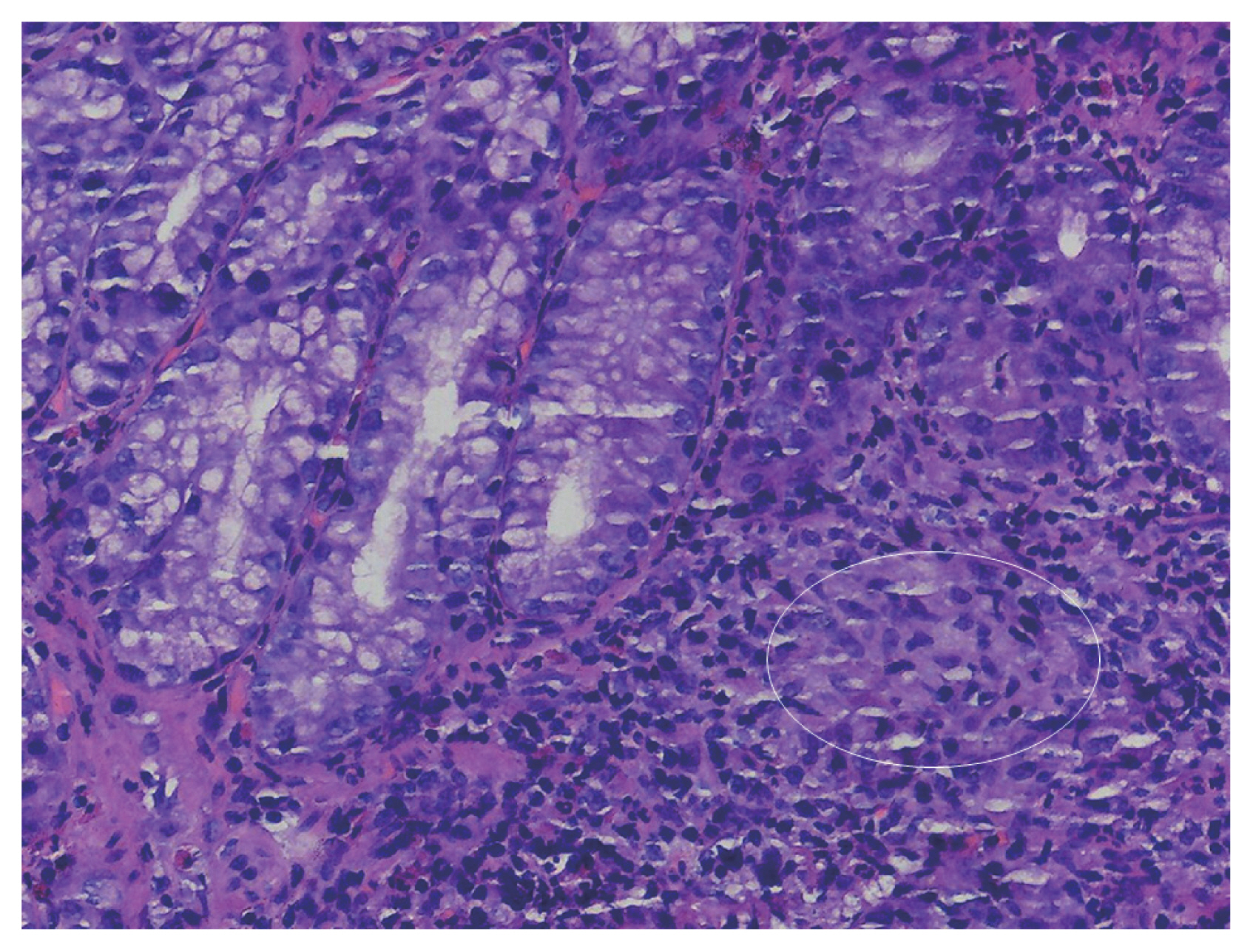Endoscopic unusual appearance of stomach in a patient with Crohn’s disease
Article information
A 20-year-old woman presented with an 8-month history of lower abdominal pain, diarrhea, and 4-kg weight loss. She had no documented medical history. Physical examination showed tenderness around the periumbilical area, multiple oral ulcers, and anal fistula. Laboratory tests revealed moderate anemia, hypoalbuminemia, and elevated C-reactive protein. Computed tomography enterography showed multiple segmental bowel wall thickening. Ileocolonoscopy disclosed multiple longitudinal ulcers. Esophagogastroduodenoscopy showed esophageal ulcers (Fig. 1A, circle), gastric antral ulcers, and an unexpected endoscopic appearance of gastric corpus: multiple shallow ulcers (0.4 to 0.6 cm) in longitudinal distributions (Fig. 1B), but no bamboo joint-like appearance at cardia. Histologic examination demonstrated focal active gastritis in the gastric corpus and epithelioid granulomas in the antrum with Helicobacter pylori negative (Fig. 2, circle). Based on clinical, radiological, endoscopic, and histological findings, the patient was diagnosed with Crohn’s disease. And the gastroscopic appearance was consistent with Crohn’s disease involving the stomach. After three cycles of induction treatment with infliximab, a repeated gastroscopy showed the esophageal ulcers and gastric ulcers were complete healing.

(A, B) Esophagogastroduodenoscopy showing esophageal ulcers (circle), and an unexpected endoscopic appearance of gastric corpus: multiple shallow ulcers (0.4 to 0.6 cm) in longitudinal distributions.

Histologic examination demonstrating focal active gastritis and epithelioid granulomas in the antrum (H&E, ×400).
To our knowledge, bamboo joint-like appearance is a characteristic and common endoscopic finding in the stomach of patients with Crohn’s disease, nonetheless, to this day there is little reported case of such an interesting gastroscopic appearance presented with multiple ulcers in longitudinal distributions in patients with Crohn’s disease.
The authors are accountable for all aspects of the work in ensuring that questions related to the accuracy or integrity of any part of the work are appropriately investigated and resolved. Written informed consent was obtained from the patient for publication.
Acknowledgments
This work was supported by the Medical and Health Guiding Project of Xiamen (3502Z20214ZD1028).
Notes
No potential conflict of interest relevant to this article was reported.
